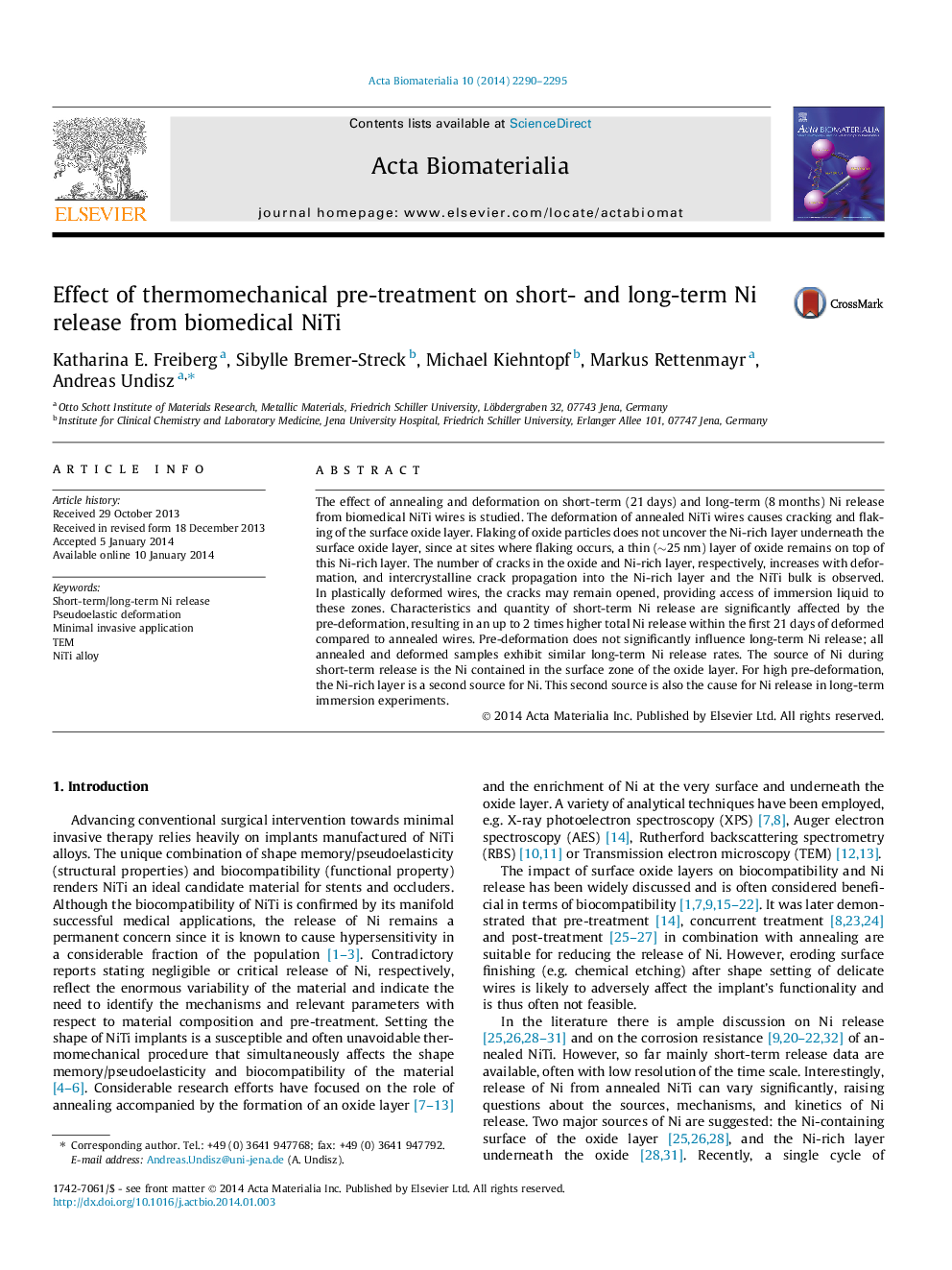| Article ID | Journal | Published Year | Pages | File Type |
|---|---|---|---|---|
| 10159236 | Acta Biomaterialia | 2014 | 6 Pages |
Abstract
The effect of annealing and deformation on short-term (21Â days) and long-term (8Â months) Ni release from biomedical NiTi wires is studied. The deformation of annealed NiTi wires causes cracking and flaking of the surface oxide layer. Flaking of oxide particles does not uncover the Ni-rich layer underneath the surface oxide layer, since at sites where flaking occurs, a thin (â¼25Â nm) layer of oxide remains on top of this Ni-rich layer. The number of cracks in the oxide and Ni-rich layer, respectively, increases with deformation, and intercrystalline crack propagation into the Ni-rich layer and the NiTi bulk is observed. In plastically deformed wires, the cracks may remain opened, providing access of immersion liquid to these zones. Characteristics and quantity of short-term Ni release are significantly affected by the pre-deformation, resulting in an up to 2 times higher total Ni release within the first 21Â days of deformed compared to annealed wires. Pre-deformation does not significantly influence long-term Ni release; all annealed and deformed samples exhibit similar long-term Ni release rates. The source of Ni during short-term release is the Ni contained in the surface zone of the oxide layer. For high pre-deformation, the Ni-rich layer is a second source for Ni. This second source is also the cause for Ni release in long-term immersion experiments.
Keywords
Related Topics
Physical Sciences and Engineering
Chemical Engineering
Bioengineering
Authors
Katharina E. Freiberg, Sibylle Bremer-Streck, Michael Kiehntopf, Markus Rettenmayr, Andreas Undisz,
